BMW X3 vs Hyundai Santa Fe – Which model is better for everyday use?
Two cars, one duel: BMW X3 meets Hyundai Santa Fe.
Which one wins in performance, efficiency and value for money? Find out now!
Costs and Efficiency:
When it comes to price and running costs, the biggest differences usually appear. This is often where you see which car fits your budget better in the long run.
Hyundai Santa Fe has a hardly perceptible advantage in terms of price – it starts at 51200 £, while the BMW X3 costs 51300 £. That’s a price difference of around 43 £.
Fuel consumption also shows a difference: Hyundai Santa Fe manages with 1.70 L and is therefore significantly more efficient than the BMW X3 with 2.80 L. The difference is about 1.10 L per 100 km.
As for range, the BMW X3 performs evident better – achieving up to 88 km, about 34 km more than the Hyundai Santa Fe.
Engine and Performance:
Power, torque and acceleration are the classic benchmarks for car enthusiasts – and here, some clear differences start to show.
When it comes to engine power, the BMW X3 has a clearly perceptible edge – offering 398 HP compared to 253 HP. That’s roughly 145 HP more horsepower.
In acceleration from 0 to 100 km/h, the BMW X3 is significantly quicker – completing the sprint in 4.60 s, while the Hyundai Santa Fe takes 9 s. That’s about 4.40 s faster.
In terms of top speed, the BMW X3 performs noticeable better – reaching 250 km/h, while the Hyundai Santa Fe tops out at 196 km/h. The difference is around 54 km/h.
There’s also a difference in torque: BMW X3 pulls clearly stronger with 670 Nm compared to 380 Nm. That’s about 290 Nm difference.
Space and Everyday Use:
Whether family car or daily driver – which one offers more room, flexibility and comfort?
Seats: Hyundai Santa Fe offers clearly perceptible more seating capacity – 7 vs 5.
In curb weight, Hyundai Santa Fe is barely noticeable lighter – 1920 kg compared to 1930 kg. The difference is around 10 kg.
In terms of boot space, the Hyundai Santa Fe offers to a small extent more room – 711 L compared to 570 L. That’s a difference of about 141 L.
In maximum load capacity, the Hyundai Santa Fe performs slightly better – up to 2032 L, which is about 332 L more than the BMW X3.
When it comes to payload, Hyundai Santa Fe to a small extent takes the win – 665 kg compared to 570 kg. That’s a difference of about 95 kg.
Who wins the race?
The BMW X3 proves to be wins the duel decisively and therefore becomes our DriveDuel Champion!
BMW X3 is the better all-rounder in this comparison.
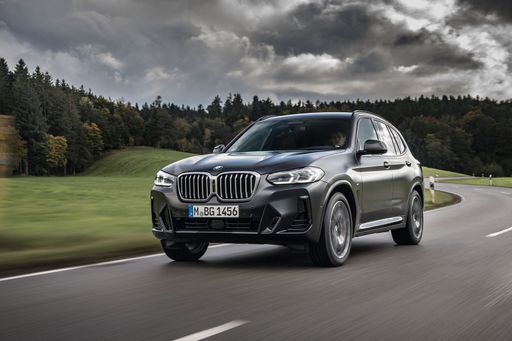
BMW X3
BMW X3
The BMW X3 stands out in the competitive SUV market with its refined blend of performance and luxury. Its interior boasts high-quality materials and a design focused on driver comfort and convenience. With a robust engine lineup, the vehicle offers a balanced driving experience that caters to both urban settings and off-road adventures.
details @ press.bmwgroup.com
@ press.bmwgroup.com
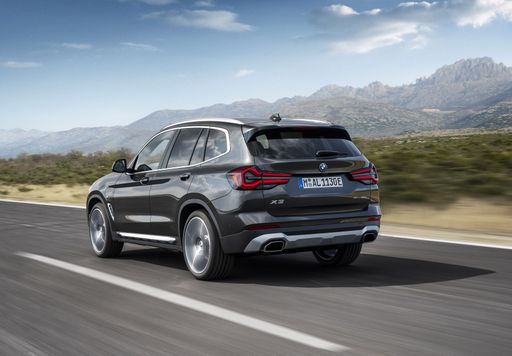 @ press.bmwgroup.com
@ press.bmwgroup.com
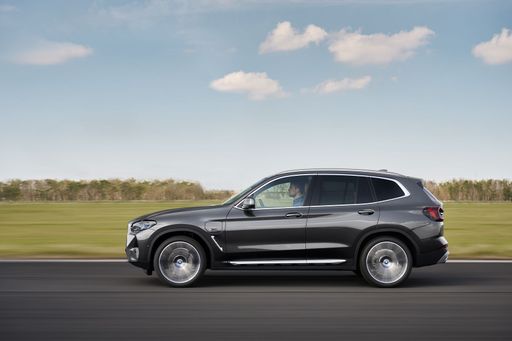 @ press.bmwgroup.com
@ press.bmwgroup.com
 @ press.bmwgroup.com
@ press.bmwgroup.com
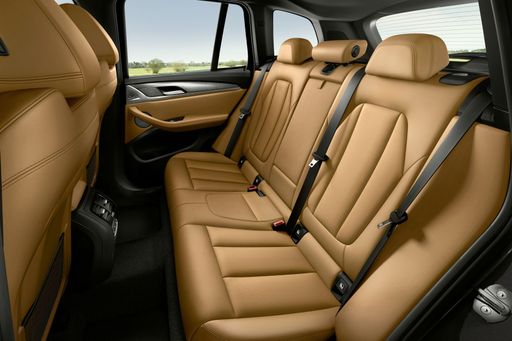 @ press.bmwgroup.com
@ press.bmwgroup.com
Hyundai Santa Fe
The Hyundai Santa Fe offers a refined blend of style and functionality, making it a strong contender in the SUV market. Its modern interior, combined with advanced technology and comfort features, creates an inviting and practical driving environment. With its sleek design and robust performance, the Santa Fe is well-suited for both urban commutes and family adventures.
details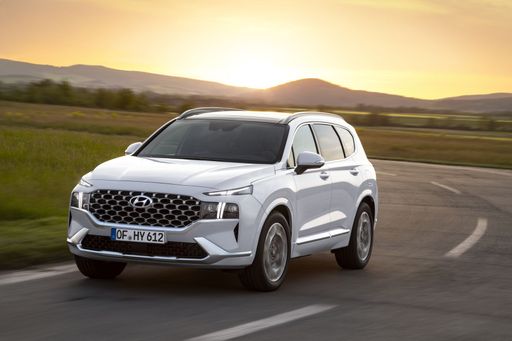 @ hyundai.news
@ hyundai.news
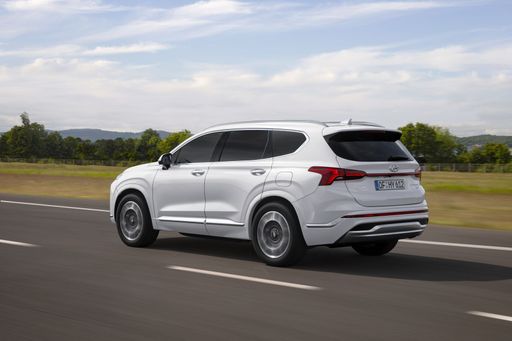 @ hyundai.news
@ hyundai.news
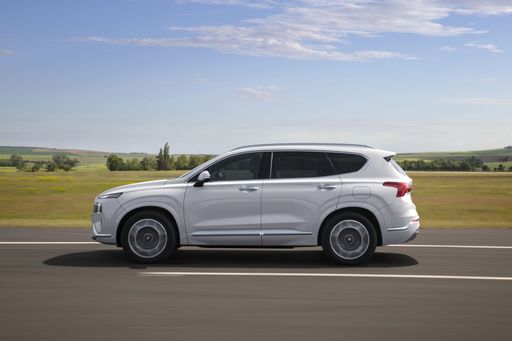 @ hyundai.news
@ hyundai.news
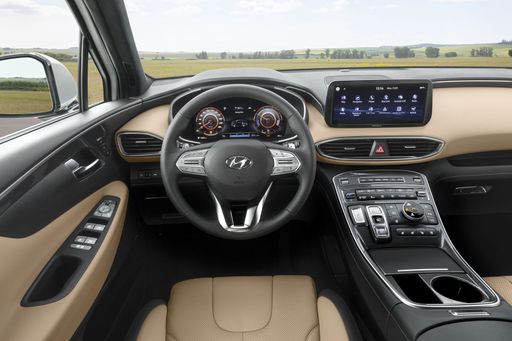 @ hyundai.news
@ hyundai.news
 @ hyundai.news
@ hyundai.news

|

|
|
|
|
Costs and Consumption |
|
|---|---|
|
Price
51300 - 72400 £
|
Price
51200 - 58400 £
|
|
Consumption L/100km
2.8 - 7.7 L
|
Consumption L/100km
1.7 - 7.1 L
|
|
Consumption kWh/100km
-
|
Consumption kWh/100km
-
|
|
Electric Range
88 km
|
Electric Range
54 km
|
|
Battery Capacity
19.70 kWh
|
Battery Capacity
-
|
|
co2
64 - 175 g/km
|
co2
38 - 160 g/km
|
|
Fuel tank capacity
50 - 65 L
|
Fuel tank capacity
47 - 67 L
|
Dimensions and Body |
|
|---|---|
|
Body Type
SUV
|
Body Type
SUV
|
|
Seats
5
|
Seats
5 - 7
|
|
Doors
5
|
Doors
5
|
|
Curb weight
1930 - 2140 kg
|
Curb weight
1920 - 2165 kg
|
|
Trunk capacity
460 - 570 L
|
Trunk capacity
621 - 711 L
|
|
Length
4755 mm
|
Length
4830 mm
|
|
Width
1920 mm
|
Width
1900 mm
|
|
Height
1660 mm
|
Height
1720 mm
|
|
Max trunk capacity
1600 - 1700 L
|
Max trunk capacity
1942 - 2032 L
|
|
Payload
570 kg
|
Payload
560 - 665 kg
|
Engine and Performance |
|
|---|---|
|
Engine Type
Petrol MHEV, Diesel MHEV, Plugin Hybrid
|
Engine Type
Plugin Hybrid, Full Hybrid
|
|
Transmission
Automatic
|
Transmission
Automatic
|
|
Transmission Detail
Automatic Gearbox
|
Transmission Detail
Automatic Gearbox
|
|
Drive Type
All-Wheel Drive
|
Drive Type
All-Wheel Drive, Front-Wheel Drive
|
|
Power HP
197 - 398 HP
|
Power HP
239 - 253 HP
|
|
Acceleration 0-100km/h
4.6 - 7.8 s
|
Acceleration 0-100km/h
9 - 9.3 s
|
|
Max Speed
215 - 250 km/h
|
Max Speed
180 - 196 km/h
|
|
Torque
330 - 670 Nm
|
Torque
367 - 380 Nm
|
|
Number of Cylinders
4 - 6
|
Number of Cylinders
4
|
|
Power kW
145 - 293 kW
|
Power kW
176 - 186 kW
|
|
Engine capacity
1995 - 2998 cm3
|
Engine capacity
1598 cm3
|
General |
|
|---|---|
|
Model Year
2024 - 2025
|
Model Year
2024 - 2025
|
|
CO2 Efficiency Class
F, E, B
|
CO2 Efficiency Class
B, E, F
|
|
Brand
BMW
|
Brand
Hyundai
|
What drive types are available for the BMW X3?
The BMW X3 is offered with All-Wheel Drive.
The prices and data displayed are estimates based on German list prices and may vary by country. This information is not legally binding.
